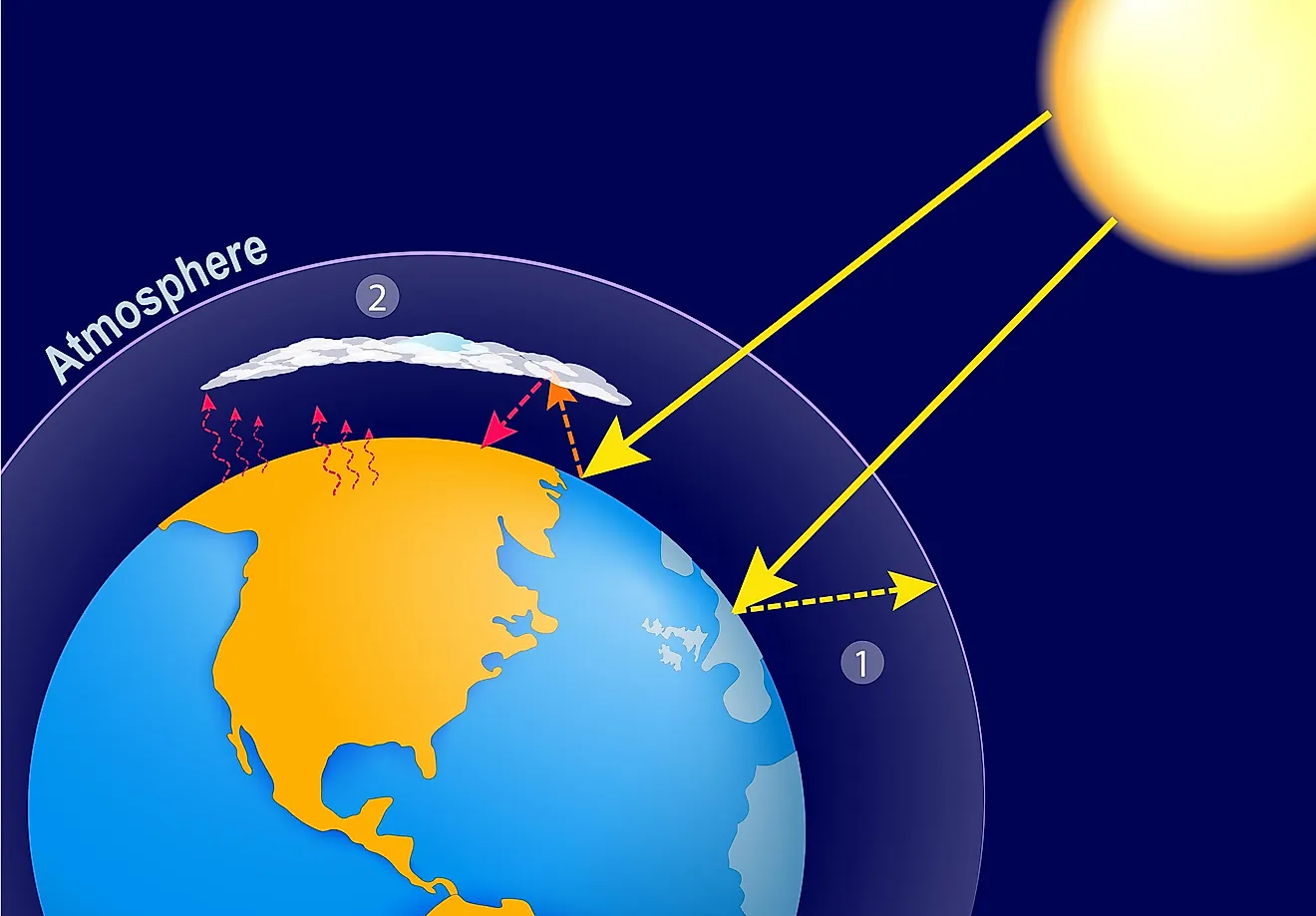How High Is The Earth's Atmosphere?

- The lowest layer of the atmosphere is the troposphere, which is where most of the Earth's weather occurs.
- The main difference between the troposphere and the stratosphere is that the temperatures begin to rise in the stratosphere.
- The final, and the largest layer of our atmosphere is the thermosphere.
The Earth has an atmosphere much different than those on the other planets in the solar system. The main ingredients of our atmosphere are oxygen, nitrogen, argon, and carbon dioxide. Our atmosphere can be divided into specific layers, which can be seen clearly if we look at its cross-section.
These layers begin from the ground level of Earth and go all the way up into space. Every single one of these layers is vital for keeping our planet healthy and alive. The final layer of the atmosphere extends upwards to 621 miles above the Earth's surface. However, since space starts 62 miles above the surface, that is generally considered to be the highest point of our atmosphere.
The Troposphere
The troposphere is the atmosphere's lowest layer, and it extends upwards to 12 miles above the surface of our planet. It is the layer where most of the Earth's weather occurs. It is also the layer that contains the majority of the atmosphere's mass, almost 80 percent of it. This layer is warmer in its lower parts because the ground heats it.
As we climb higher, the temperature drops, and at the peak of the troposphere, the temperature is negative 64 degrees Fahrenheit (negative 55 degrees Celsius). The pressure of the atmosphere acts the same way as the temperature, meaning it lowers with altitude. This is the reason mountain climbers are required to use oxygen tanks in order to be able to breathe.
The Stratosphere
The stratosphere is the layer that can be found at the heights between 12 and 31 miles above the Earth's surface. The difference between this layer and the troposphere is that the temperatures begin to rise with height in the stratosphere. This means that the air begins to mix, which leads to general stability.
This stability is used by commercial airliners because they reach cruising altitude in this layer of the atmosphere. Another important thing we need to mention about the stratosphere is that it is the place where the ozone layer is found. The ozone layer is what protects us, along with other biological organisms, from ultraviolet radiation.
The Mesosphere
This layer of the atmosphere extends between the heights of 31 to 53 miles above the surface of our planet. It is difficult to send scientific instruments that would allow us to research this layer to these altitudes. This is the reason why we know very little about the mesosphere. Airplanes do not fly high enough to be able to reach it, and satellites orbit the planet at much higher altitudes.
This is why it is so difficult to explore this layer. However, we do know certain facts about it. The most important one is that most meteors, which are on the way to impact the Earth, burn up in this layer of the atmosphere. This makes the mesosphere an important line of defense for our planet, in a way.
The Thermosphere
The thermosphere is the final layer of our atmosphere. It is also the largest layer, extending between altitudes of 53 and 621 miles. However, since space starts at a height of 62 miles, the majority of this layer actually does not fall under the atmosphere of our planet. This boundary that cuts through the thermosphere is known as the Karman line. The International Astronautical Federation recognizes this line as the official boundary of space.
All satellites and the International Space Station orbit our planet by passing through the thermosphere. However, there is one other layer of gas that can be found above the thermosphere. It consists of helium, hydrogen, and carbon dioxide, and it is called the exosphere. Many consider it to be an official part of our planet's atmosphere, but the air density is so low in it, that it is officially regarded as interplanetary space.











